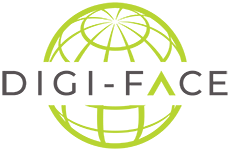Internal Publication
Analyzing meteorological drought in Liboré, Tillaberi, Niger, West Africa
Purpose: This study aimed to conduct a comprehensive examination of meteorological drought in Liboré, focusing on understanding the patterns and impacts of meteorological variables on drought conditions from 1990 to 2020. The goal was to identify and analyze trends in rainfall distribution, temperature variations, and drought indices to inform adaptive measures for mitigating the adverse effects of drought on agriculture.
Theoretical Framework: The study was grounded in the theoretical understanding of meteorological drought, utilizing established indicators and indices to measure and analyze drought severity and its impact on the environment. Key theoretical concepts include the Palmer Drought Severity Index (PDSI), Standardized Precipitation Index (SPI), and Combined Drought Index (CDI), which are used to evaluate and interpret drought conditions and their variations over time.
Design/Methodology/Approach: The analysis employed a quantitative approach using meteorological data from 1990 to 2020. Indicators such as rainfall, evapotranspiration (ETP), Palmer Drought Severity Index (PDSI), Standardized Precipitation Index (SPI), and Combined Drought Index (CDI) were utilized. The methodology involved regression analysis to explore the relationships between rainfall and temperature variables, as well as a detailed examination of SPI and CDI values to assess precipitation patterns and drought trends.
Findings: The study revealed distinct patterns in rainfall distribution, with peak precipitation occurring in July and August. Temperature variations showed Tmax peaking in June and Tmin decreasing from July to December. Significant associations were found between rainfall and meteorological variables, with Tmax negatively correlated and Tmin positively correlated with rainfall. SPI analysis highlighted precipitation deficits from January to May and surpluses from June to September, with challenges noted in September affecting late crops. CDI analysis indicated an upward trend in drought conditions, with moderate to severe drought observed in years like 1991, 1993, and 2011. PDSI analysis showed a progressive decrease in drought severity from May onwards.
Research, Practical and Social Implications: The findings underscore the urgency for adaptive measures to address worsening drought conditions in Liboré. From a research perspective, the study highlights the complex interplay between climatic variables and their impact on agricultural productivity. Practically, the results suggest the need for improved drought management strategies and timely interventions to mitigate the adverse effects of drought. Socially, the study emphasizes the importance of understanding and addressing the challenges posed by drought to ensure sustainable agricultural practices and food security in the region.
Keywords: Meteorological drought, Rainfall patterns, SPI, CDI, PDSI, Climate change and Liboré.
Author: MOUSSA SOUMAILA, Abdoul Rachid | ORCID: https://orcid.org/0009-0006-2707-858X
Co-author: Yacouba Ali, Razinatou
Co-author: Soumana, Boubacar
Institution: Université Abdou Moumouni Niamey | Centre: West African German Centre for Sustainable Rural Transformation (WAC-SRT)
Type: Working paper | English
Subjects: Climate and Environment
Date: February, 2025 | Pages: 20 pages
Copyright: The Authors | License: Open Access



